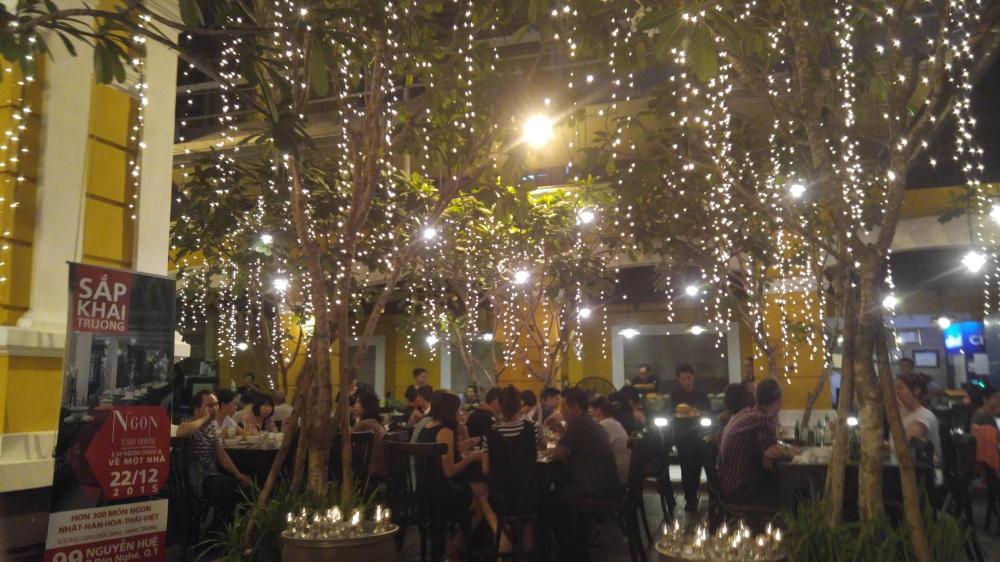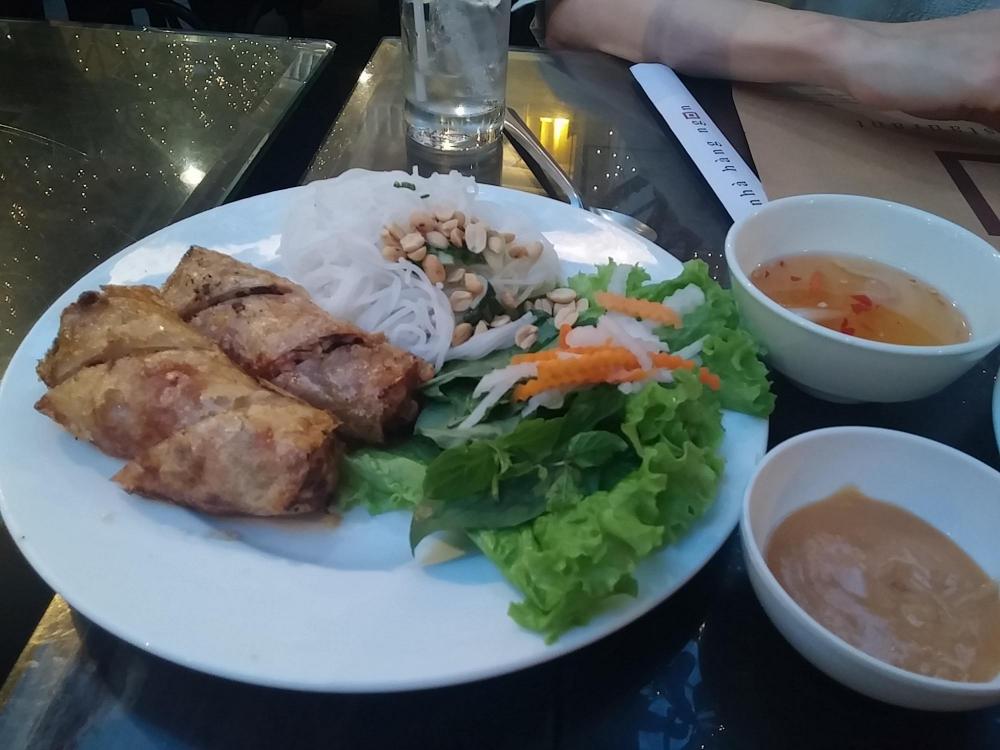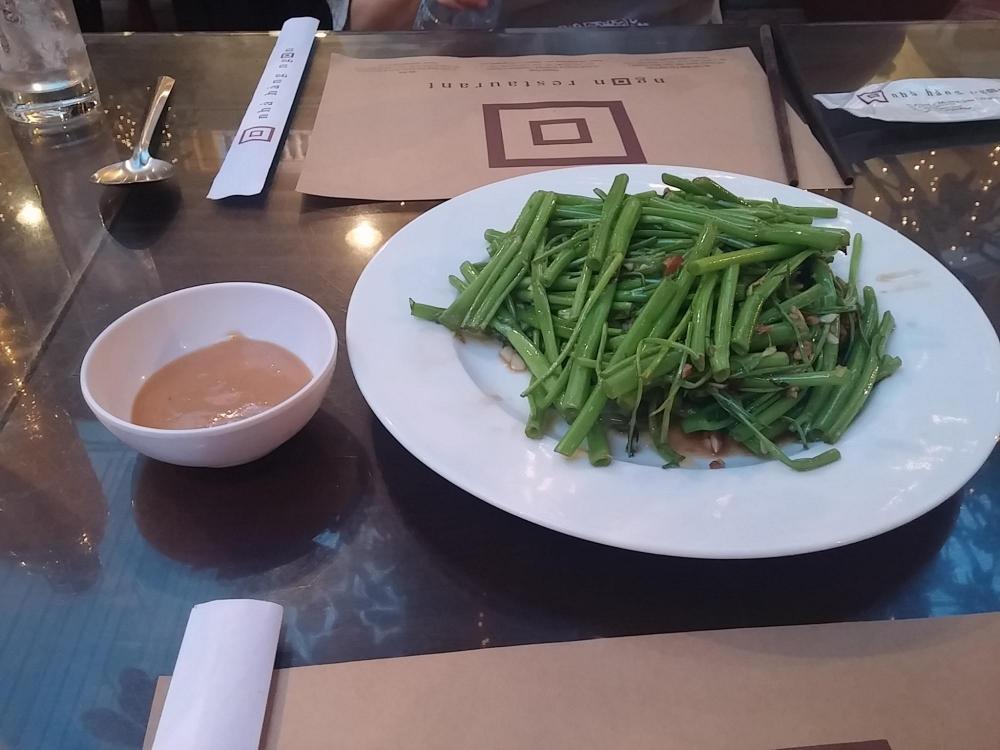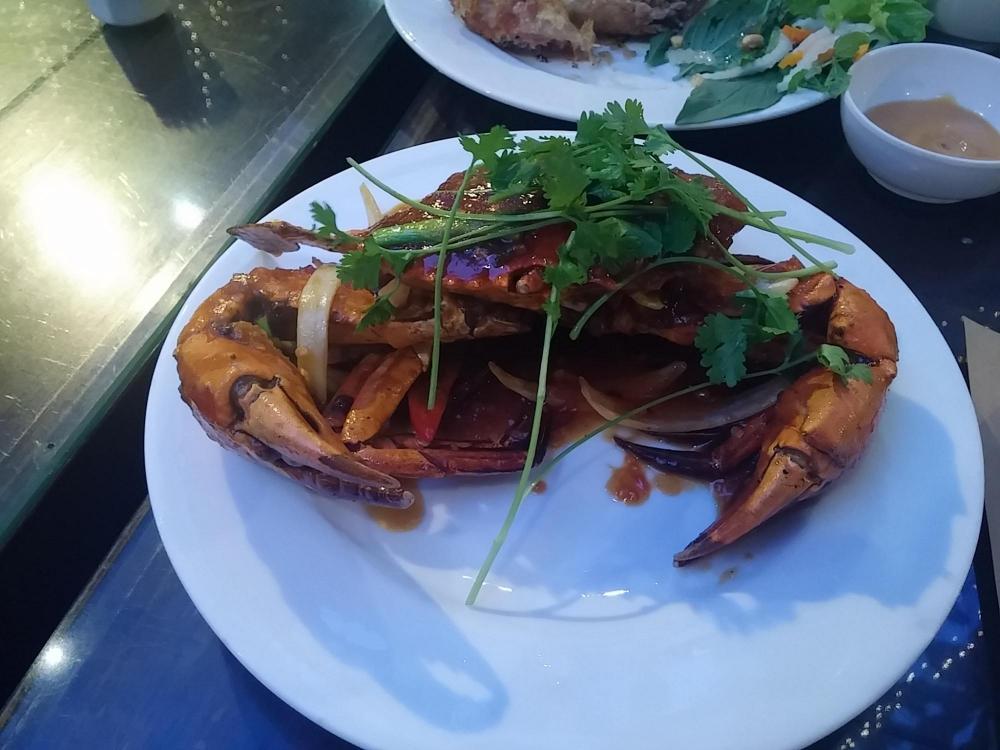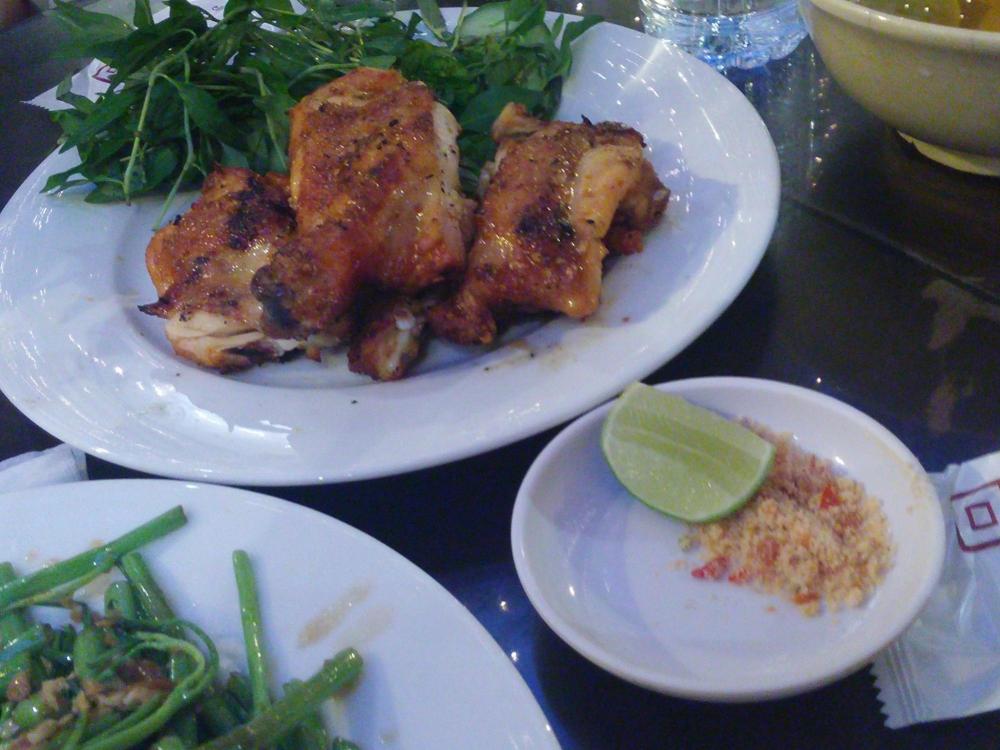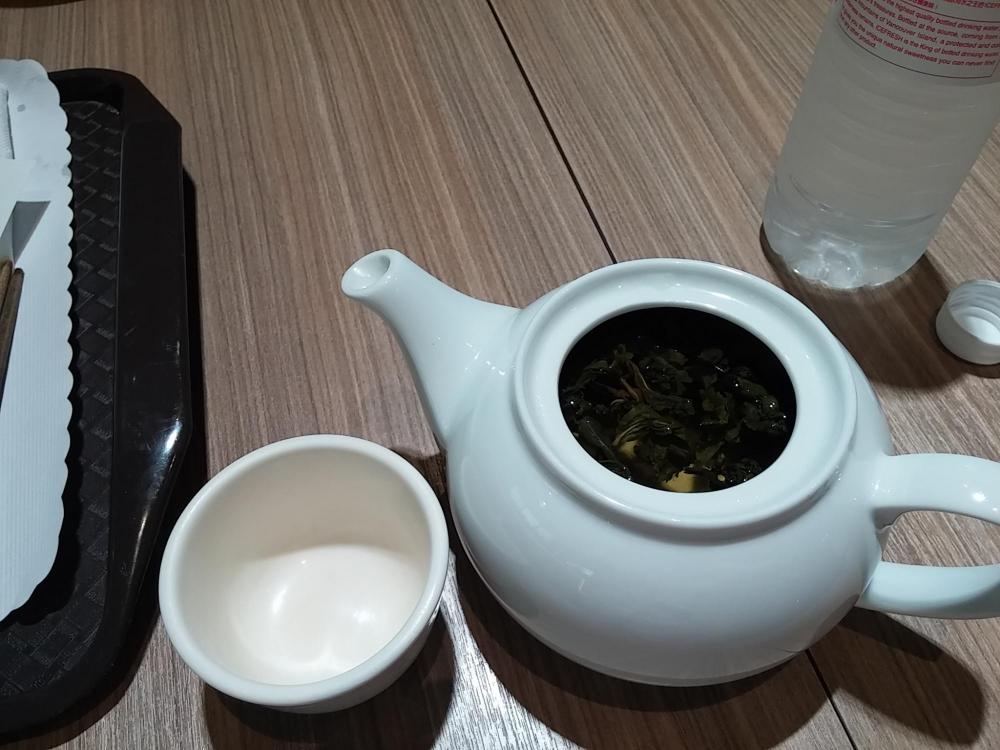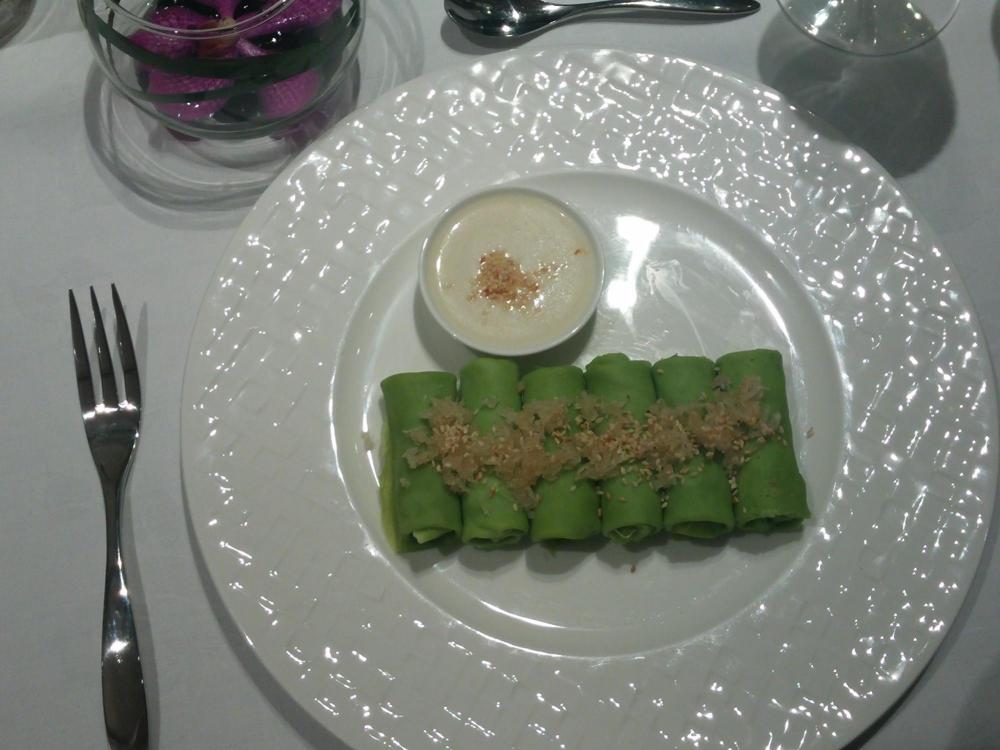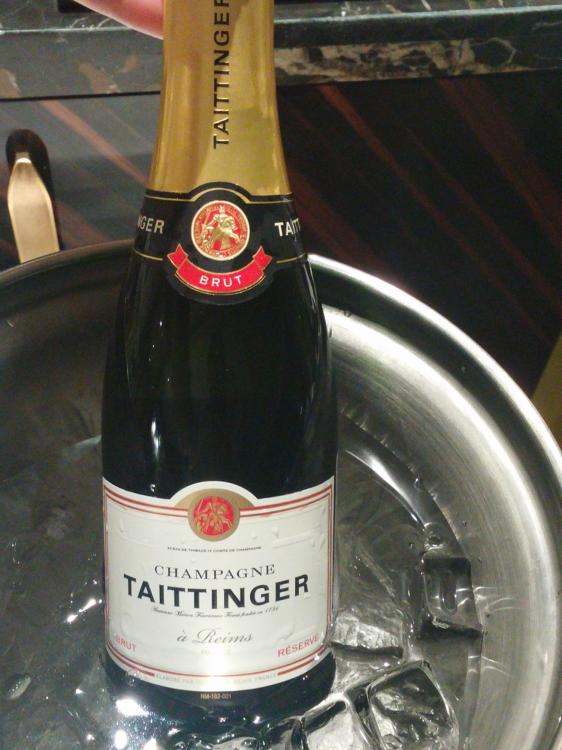
KennethT
participating member-
Posts
6,952 -
Joined
-
Last visited
Content Type
Profiles
Forums
Store
Help Articles
Everything posted by KennethT
-
If there's one thing we've learned from taking a few trips 12 time zones away, it's that, no matter what, by late afternoon on the first day, we will be exhausted and ready for bed! So, now, in advance, I try to find a place to go for dinner that is within close walking distance from our hotel, won't take too long, and doesn't have to be super-fantastic since we'll probably be too tired to really enjoy it thoroughly anyway. Fitting this bill nicely was Nha Hang Ngon, an EXTREMELY popular tourist restaurant. This place is busy morning, noon and night. They're known for taking "the best of Saigon's street food" and bringing it indoors in a safe, tourist friendly environment - which basically means there are menus with English, wait staff who speak English, and things come on relatively fancy plates and silverware. We have found that this also means that the flavors are most definitely muted, and despite being significantly more expensive, the preparation quality is not nearly as good as the true local food that it is meant to reflect. As you can see below, it's a very pretty restaurant - they have an outdoor courtyard, and also indoor seating in their beautiful French colonial building. Here's what we had: Cha Gio - spring rolls. There are a few things to notice here that will differentiate this restaurant's version from others we experienced in local places later on: A) served with a peanut sauce (lackluster at that) - spring rolls are typically not served with a peanut sauce - peanut sauce is served with the summer roll (goi cuon) B) these spring rolls are greasy and C) there is a ridiculously paltry amount of lettuce and herbs. Rau Muong - stir fried morning glory... a very good version Crab with tamarind sauce. What you can't tell from this photo is that the crab was overcooked... tamarind sauce flavor was nice though. Ga Nuong - grilled chicken served with chili salt. The chicken was tasty - but despite their fluancy with English, the staff did not tell us what to do with the chili salt - we actually found out the next night at a local restaurant where no one spoke any english whatsoever - but we got a lot more information from their extremely helpful staff from their miming/pointing and my horrible Vietnamese which I had been learning for the past month. It came in handy in quite a few occasions... but that's to come... Anyway, back to the chicken... without direction, we assumed that you're supposed to squeeze the lime onto the chicken, then dip the pieces into the chili salt... turns out, the intention is to squeeze the lime into the chili salt to make a sauce, and dip into that.
-
OK - so we're home, and I'm currently in the process of downloading all the photos from the collection of cameras and phones... while that's going on, I can give a bit of a preface to the upcoming trip. As some of you may know by now, I am a bit obsessed with the food and cultures of SE Asia... I'm not sure why... 10 years ago, I had decided that I wanted to go to SE Asia for our honeymoon (neither of us had ever been before) and even planned our wedding date around a good time to go there, weather-wise... At the time, I thought it would be a trip of a lifetime and that we'd never make it back - mostly because it is so far away with a flying time of about 20 hours, and 12 hour time change... Little did I realize that the flight is really not that bad - I actually prefer those flights to flights to CA or Europe since you have enough time to medicate yourself and actually get a decent amount of sleep on the flight. Also, the seats in coach are definitely comfortable (I'm looking at you Singapore Airlines, Cathay Pacific and EVA) the food is decent, and the jetlag is not as bad as I thought it would be. So, now, I try to go there at least once every couple of years, if not every year. This year, we realized a few months ago that we had enough time to take a trip during the week between Xmas and New Years... I had always wanted to go to Saigon, but hadn't in the past since our typical summertime vacation is a horrible time to go there, weather-wise. It is the height of their rainy season, which, with an average rainfall of 12-14 inches of rain per month at that time, practically guarantees getting stuck in some heavy downpours, if not some major flooding. So, with the opportunity to travel during their dry season, we jumped at the chance - which worked out since we did not see a drop of precipitation (or a cloudy day for that matter) once during our 7 days on the ground. There is a bit of an issue with planning when it comes to Vietnam, as opposed to some other countries in SE Asia - there is just not nearly as much information available. Sure there are guidebooks, but as I've found on other trips, the best food is definitely not found in a guidebook! I did find a few blogs written by expats living in Saigon that provided me with more than enough information though. For anyone planning on traveling to Saigon or Hanoi, or just interested in a good read about the street food scene there, I would highly recommend reading Graham Holliday's book, "Eating Viet Nam, Dispatches from a Blue Plastic Table". It's a bit dated, and a few of the specific places he mentions are either impossible to find, or don't exist anymore, but it really sets the scene very well. I also enjoyed reading and got lots of info from the following blogs: LegalNomads.com, EatingSaigon.com, and VietnamCoracle.com Enough background... our trip began on the 24th of December, with a 12:20AM flight from NYC to Taipei on EVA Airlines. We've taken this flight before since I find EVA to have some of the best prices, compared to Cathay Pacific, and I like the very late (or early) flights since I can work a full day, go home, leisurely pack and have dinner, then go to the airport with no traffic. Then, once on the plane, I can medicate myself and sleep for a good 6-8 hours after being fed a decent meal, then watch a few movies on the video on demand system, be fed again (not counting the numerous snacks available in between) and land. Since we've gone this route a few times, we have found our favorite place to eat while in the Taipei airport: I-Mei Dim Sum! Sure, it's not the best dim sum around, but for airport food, it is stellar. We had the Xie Long Bao (pork soup dumplings), Char Sieu Bao (fluffy buns stuffed with BBQ pork) and a Taiwanese beef noodle soup. The Char Sieu Bao is different from the versions we had all over Hong Kong - less sweet and much more savory, with a slight smoky flavor to the filling. The beef noodle soup has a strong spice flavor of star anise. I also enjoy getting a nice Taiwanese loose leaf oolong tea: One last thing to note about the Taipei airport is that the EVA flight lands at 5:15AM, but the restaurant doesn't open until 6, which leaves you some time to find this: A nice "beachy" lounge (for free) where the lounge chairs recline back so far that your feet can be actually higher than your head! I enjoyed a nice nap here while we were waiting: Next stop, Saigon!!!!
-
Happy New Year! I'm sitting at the gate waiting for my flight from Saigon to NYC connecting through Taipei so I figured this would be a good opportunity to get started... But this is just the intro- the rest will gave to wait until I land about 22 hours from now, sleep for about 12 hours, then get my photos in order! We had a great week enjoying beautiful weather, taking in the frenetic yet relaxed street life and eating some amazing local food... Our flight here was on EVA Airline and was very pleasant and uneventful. Our flight from Nyc to Taipei left around 12:20 AM on the 24th. I love those night flights since it makes it very easy to get a decent amount of sleep, even in coach. EVAs food is quite good eith both Chinese and western choices for dinner and breakfast, and they came through several times with snacks such as a fried chicken sandwich with some kind of mustard. I think I had 4 of them! Once I get home, I'll continue posting with pics from our feast in the Taipei airport.... Spoiler: those who have read my Singapore foodblog from July may see a slight trend...
-
If you'll be going to Saigon, and are planning to eat local food in non-tourist locations, then this blog will be great for you.... Stay tuned! Sorry to derail this thread a bit... Now back to our regularly scheduled programming...
-
We've been in Saigon for the past week!
-
Urgghhh... Now I remember why I dont try to write a longish post using my phone.... I lost it! Anyway, since we're traveling right now (leaving to go home tomorrow ) we're not cooking anything, but we had an awesome dinner of snails and seafood, pics to come when I do my foodblog after I collate all the photos... But in the meantime I'll post a few photos as we're back in our room awaiting the fireworks due in a couple hours... We ordered room service for dessert - pandan flavored banh cuon stuffed with shredded coconut with a cocolicious dipping sauce. Plus a little drinky-poo for after we do some packing... The ladt shot is the craziness in the street just below our hotel! And happy anniversary Shelby - what a great date... so easy to remember!
-
All the mangosteens I've seen in NYC are frozen or defrosted... And disgusting compared to the fresh ones.
-
I wouldn't suspect greenhouse mangosteen since the trees are notoriously hard to transplant. I became so fascinated with them a few years ago, I actually researched it. The trees take a long time to be mature enough to bear fruit (15-20 years!) and most dont survive past a few years after transplant. Since the importation of fresh mangosteens are prohibited in the US, a few companies tried to creat orchards inPuerto Rico but with no success. I wonder if they're being grown in Northern Australia? That may be a tropical climate and would be their summer now...
-
Does anyone know when mangosteen season is inSE Asia? I had always thought it was a pretty short season from late spring through mid summer.... I'm in Saigon at the moment and saw a vendor selling them out of a basket strapped to the back of a motorbike. But he was the only one I've seen with them all week.... I didn't get any... But I was curious if anyone knew any more info... Tomorrow's another day!
-
Yes unfortunately the sv dash is ios only. However nathanm's tables require no operating system. I'd figure the timing for you but I'm on vacation and dont have access to sv dash or the tables which i printed years ago and searching for the tables on my phone seems less than pleasant. I'm sure if you wait a few hours for people to wake up someone can help you more specifically than I.
-
As I'm sure you're aware, sv times are dependent on thickness, bath temp and core temp. Using a bath that is just over your core temp will result in the even cooking that most love sv for, but will take the longest time. To specifically answer your question, I'd advise using either Sous Vide Dash (a VERY useful app if you do lots of sv cooking) or you can use the charts provided by nathanm many years ago in the original sous vide thread. However, part of me wants to know why you'd bother cooking the pork roast well donev SV... Wouldn't it be easier and faster to roast conventionally?
-
Very interesting. Are the recipes from a specific region, or do they roam around China as a whole?
-
Hilarious....
-
Can I ask which airline it was? I've always enjoyed my long haul flights on EVA, Cathay and Singapore Airlines... cattle class was never so good, with friendly service and decent food.
-
Indeed, thick film heating has been around for several years, at least. The process sprays an electrically resistive film onto a substrate (typically mica or aluminum). Then contacts are added; when a voltage is applied, the entire surface heats evenly due to it's even resistance. See http://www.dateccoating.com/
-
Aside from the ears and snout (which presumably still have the cartilage in it), would you say that the texture from the rest of the face is roughly the same - i.e., skin and a little bit of meat on the back?
-
Right... I knew I had seen it somewhere.... thanks!
-
Franci, what is in the top photo?
-
Pedro, I was thinking that it should be possible to empirically calculate the difference in efficiency between your waterbath and steam oven. Do you have any needle probes/foam tape that you can use to measure the core temp of a block of meat as it rises? If so, you can measure the temp rise at different oven temperatures while comparing to the expected results using SV Dash.... just a bit of homework...
-
Technically, steam is not < 100degC... that's 'fog'... steam is the clear, vapor form of water, which, when under pressure, can get extremely hot - over 600deg! So, if the machine does produce real steam, and not just hot fog, then when the steam condenses on the relatively colder meat, the most significant form of heat transfer is the latent heat of steam, which is what PedroG was talking about - it is much more powerful than just the circulation of hot water or hot vapor filled air. This is why steam at 150degC can burn much worse than touching metal heated to 150degC - the condensation of the steam releases a ton of heat all at once - much worse than any conduction burn. ETA: after reading Pedro's description again, though, at 55degC, the oven chamber wouldn't have steam in it anyway... it would be warm fog, which is water vapor that has already condensed - so I don't think the latent heat would be a factor.
-
Thanks Linda... I've read through Andrea Nguyen's blog too - I just didn't put it in my list because her site is more about cooking than eating out. I've also read Stickyrice, but as you say, it's about Hanoi... he did have a couple of posts on Saigon. Unfortunately, this trip is too short, so we can't travel all over - but my wife and I were in Hanoi about 10 years ago for a few days, and really really enjoyed it. One day we will go back and see how much has changed (I'm sure a lot!) but there are still a lot of places on our list where we haven't been yet.
-
I've been getting very excited planning for this trip. For those following along, here's a list of books/blogs that I've been perusing: Eating Viet Nam: dispatches from a blue plastic table, by Graham Holliday - this book is a collection of musings by a British expat as he lived in Viet Nam for several years... first half of the book is about Hanoi, the second half about Saigon. An excellent read - his descriptions of food are great, and he's got a great sense of humor as well. Legal Nomads blog: legalnomads.com - this is a blog by Jodi Ettenberg, who has been traveling non-stop for several years, writing about food. She has spent the past few winters in Saigon and has many detailed blog posts about her favorite spots. Eating Saigon blog: eatingsaigon.com - 2 guys who live in Saigon constantly eating and writing about street/local food! Everything I've read so far tells me to avoid the restaurants that are listed in the guidebooks - there are so many great local options which are better tasting, often healthier, and significantly cheaper! More bang for your Dong I'll put up more info as I find it - and, of course, if anyone else has recommendations, I'm all ears! I'll probably do a write-up of our eating adventures in early January, as we get home New Year's day, and it'll take a week or two to get back on schedule, and download all the photos....
-
That's hilarious.. I didn't see that part - I'll have to go through again and look for it!
-
I thought this was fascinating, on a couple of levels. I can see how this type of interaction can help build your brand among consumers. I didn't have time to watch the whole thing - just bits and pieces.... how did you feel that it worked with your timing? Did you feel like it was a distraction during the times you were busy?
-
OK - now it makes more sense of what you're trying to do. In that case, if you cook the belly whole, rapidly chill when done, and press. You can then remove from the bag, remove all the jelly/rendered fat, then trim to the desired sizes. Each piece should then be resealed in a new, small bag, and then repasteurized. If you repasteurize at 60C, the belly shouldn't give any more liquid, and it shouldn't change shape. Finally, rapidly chill in ice water and store at 34degF or lower for longest possible shelf life. When reheating, dependign on thickness, just flashing under the grill may not heat it all the way through - so it may be better to instruct people to put the bag in about 130degF water for 20 minutes or so, then remove from the bag, blot the skin dry with a paper towel, then flash under the broiler, or sear in a pan with hot oil (works better than a broiler).


